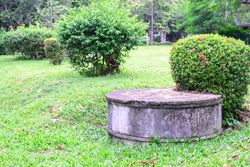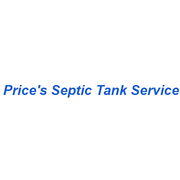The 3 Primary Parts of Your Septic System

If your home has a septic system, you probably don’t think about it—until there’s an issue, that is. The underground wastewater treatment setup uses a combination of nature and technology to create an efficient, environmentally friendly way to treat the water exiting your home’s interior. It consists of multiple components; all ensure the system operates smoothly. Here are the key parts you need to know about and the maintenance required to keep them running.
The 3 Components of a Septic System
1. Drain Pipe
This pipe connects your home to the exterior septic tank, allowing wastewater to flow efficiently out of the house. If this pipe gets blocked, however, wastewater won’t be able to exit your home, creating sewage backups indoors. To prevent buildups, never wash grease, fats, eggshells, cigarette butts, or feminine products down the drains. Also, watch your water use. The less wastewater that’s produced, the less septic strain you’ll experience, keeping your system in quality condition.
2. Septic Tank
The tank is a watertight container that holds the wastewater washed out of your toilets, baths, kitchen, and laundry machines. Solids settle at the bottom, forming sludge, while oil and grease float to the top, forming a layer of scum. Specialized compartments and a T-shaped outlet prevent these substances from leaving your tank, but it’s not a never-ending container.
 Septic maintenance is important, so schedule annual inspections to ensure your system is up to par. If anything needs repairing, it can be tackled before it has the chance to get worse. Experts also recommend professional septic tank pumping every three to five years to prevent buildups from accumulating and spilling over into the drain field, causing sewage backups and decreasing the tank’s life span.
Septic maintenance is important, so schedule annual inspections to ensure your system is up to par. If anything needs repairing, it can be tackled before it has the chance to get worse. Experts also recommend professional septic tank pumping every three to five years to prevent buildups from accumulating and spilling over into the drain field, causing sewage backups and decreasing the tank’s life span.
3. Drain Field
Eventually, liquid wastewater exits your tank and enters the drain field, a shallow, grass-covered area in the surrounding unsaturated soil. Pretreated wastewater is emptied into the soil through piping, and the soil treats and disperses it, removing harmful viruses and bacteria. If too much liquid accumulates, it will flood, creating sewage backups in your sinks, showers, and toilets, as well as destroying nearby grass and plants. Septic tank pumping will prevent overflows, keeping your system under control. In addition, keep traffic away from the drain field; this puts too much pressure on the soil and will damage the piping beneath it.
Your septic system is an essential part of your property, so take good care of it. Whenever you need assistance, the professionals at Danielsville, GA’s Price’s Septic Tank Service will help. Offering reliable septic maintenance, pumping, and repairs, they’ll keep your system in excellent condition. They use state-of-the-art equipment and techniques and even offer emergency services. Visit the website to learn more, or call (706) 789-3263 to schedule your appointment today.
About the Business
Have a question? Ask the experts!
Send your question

